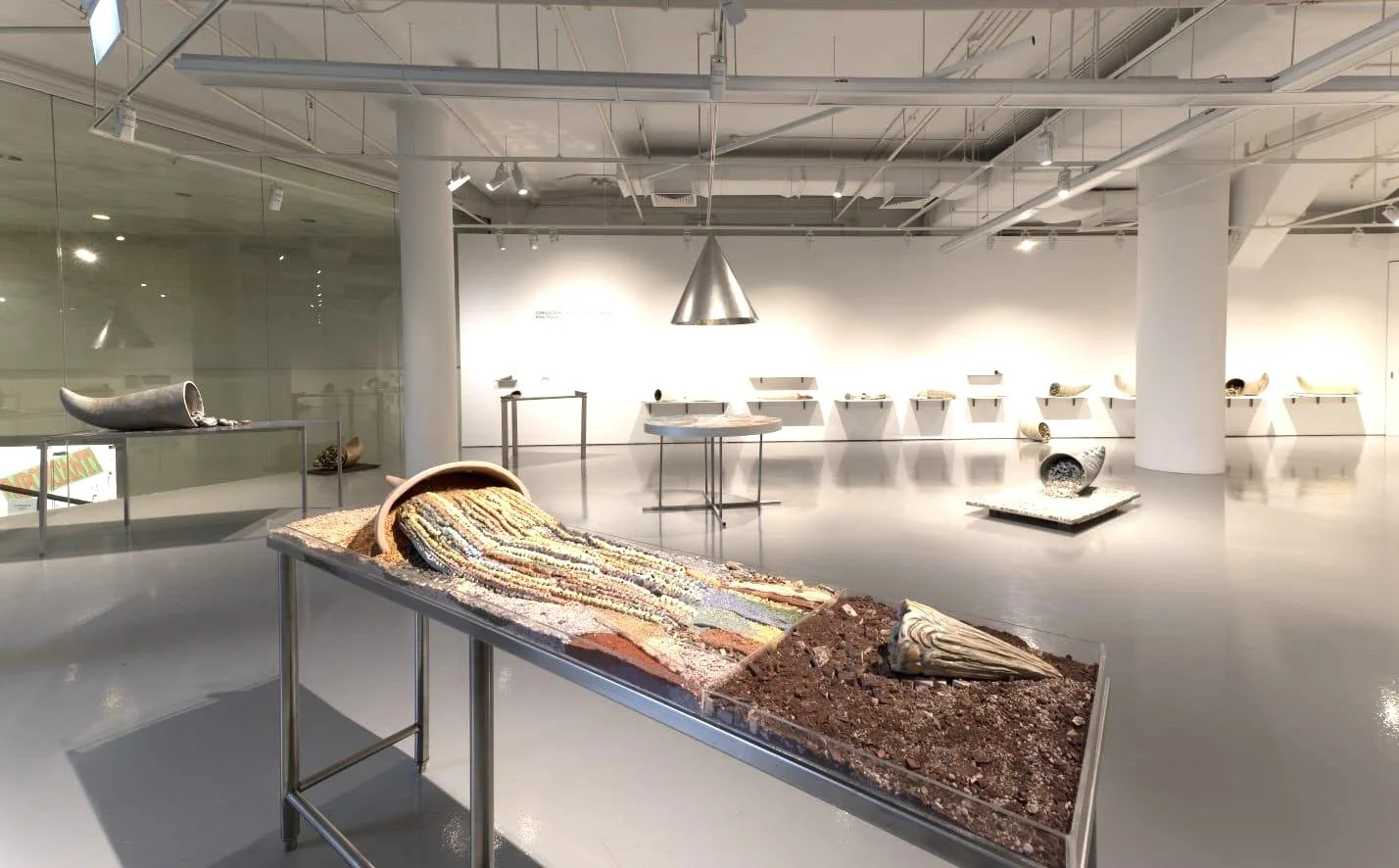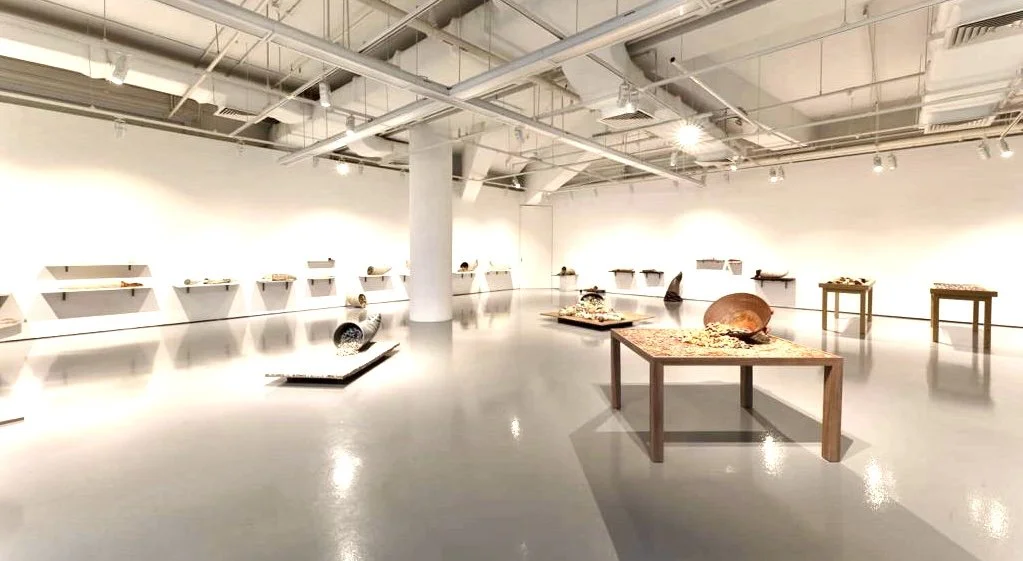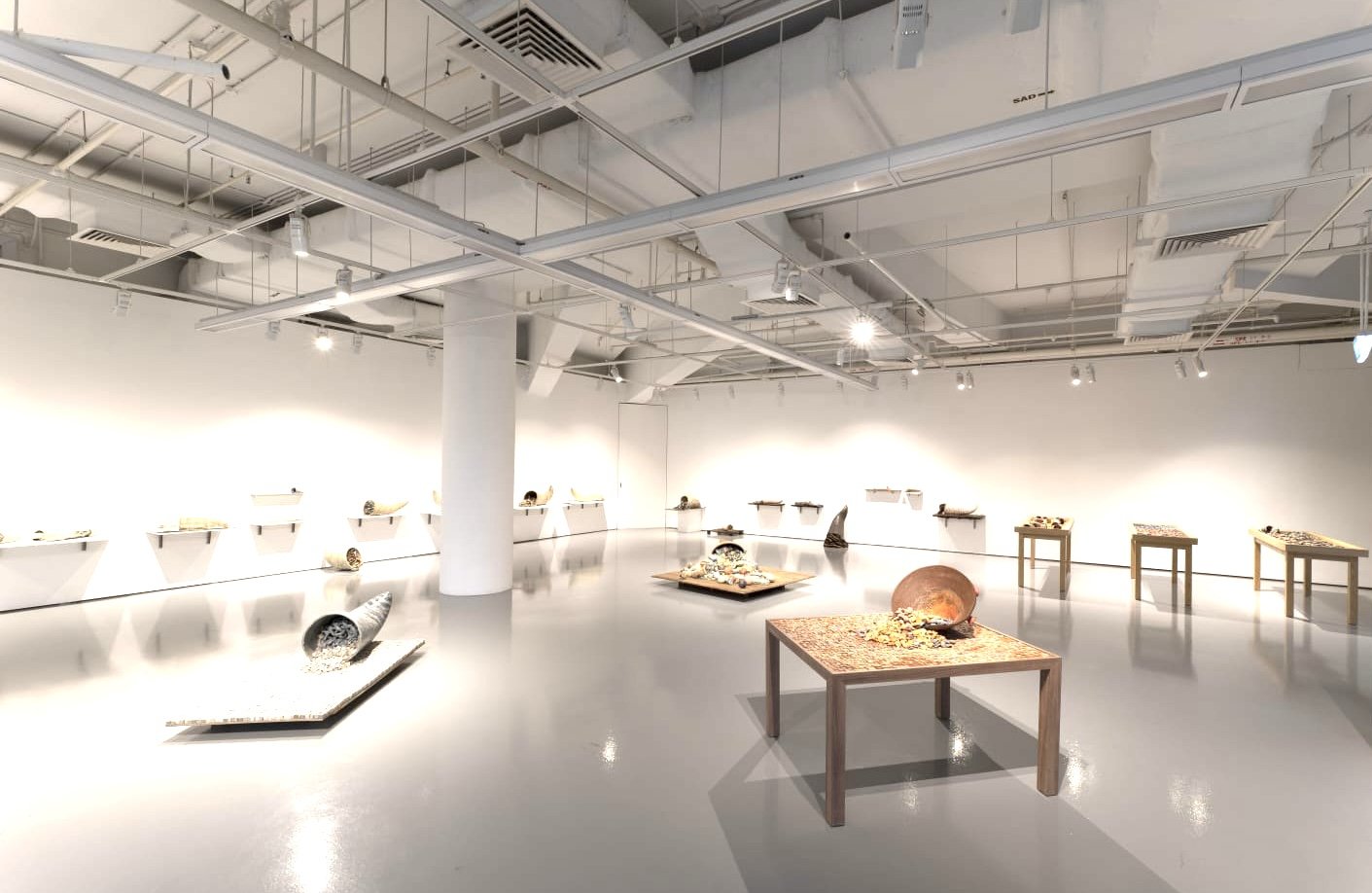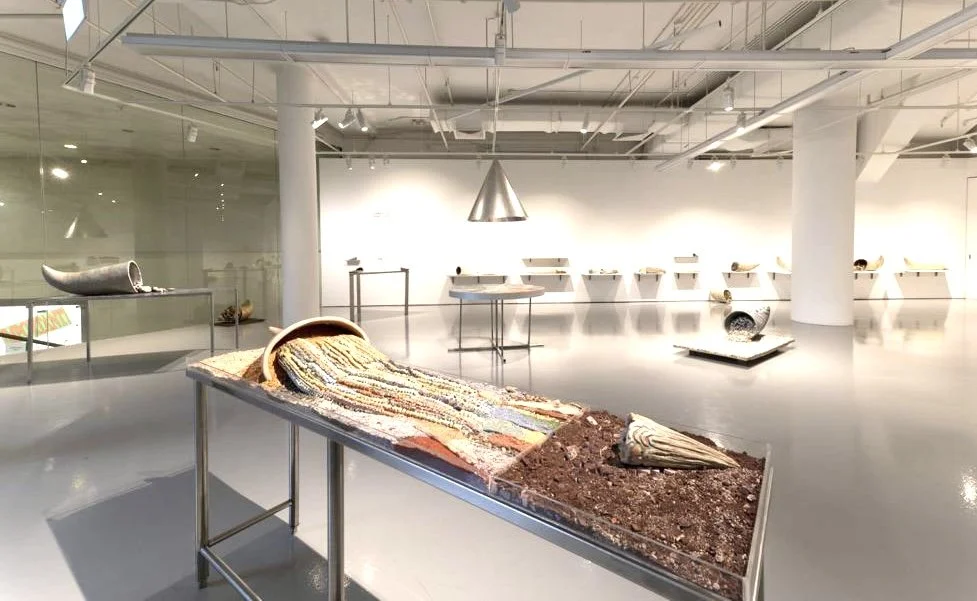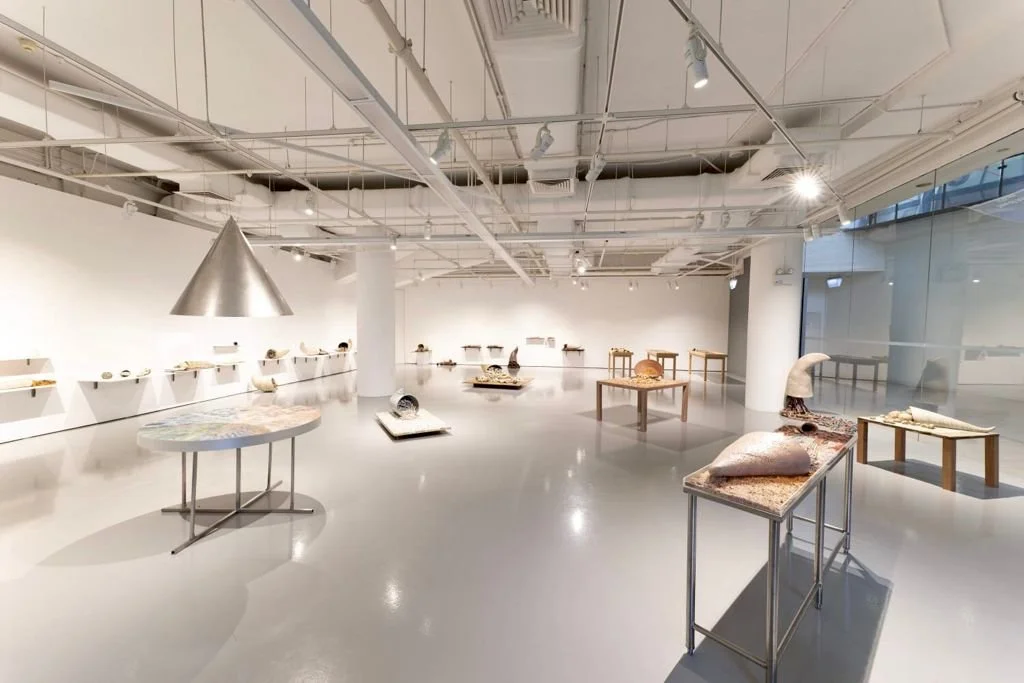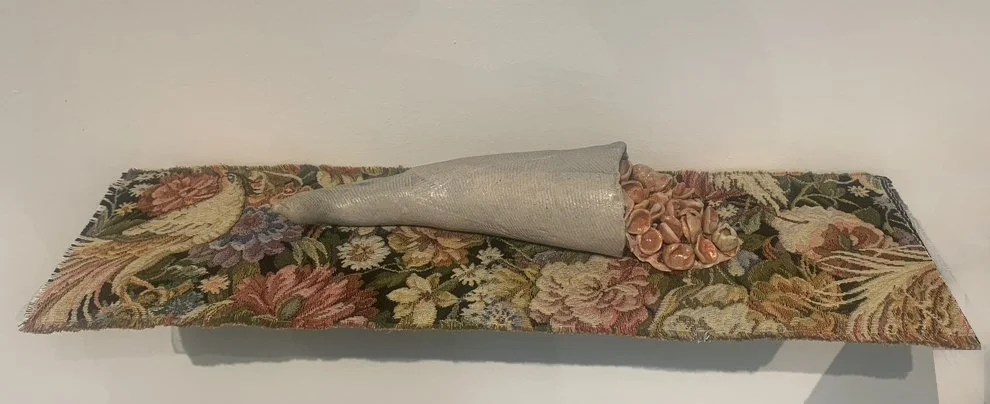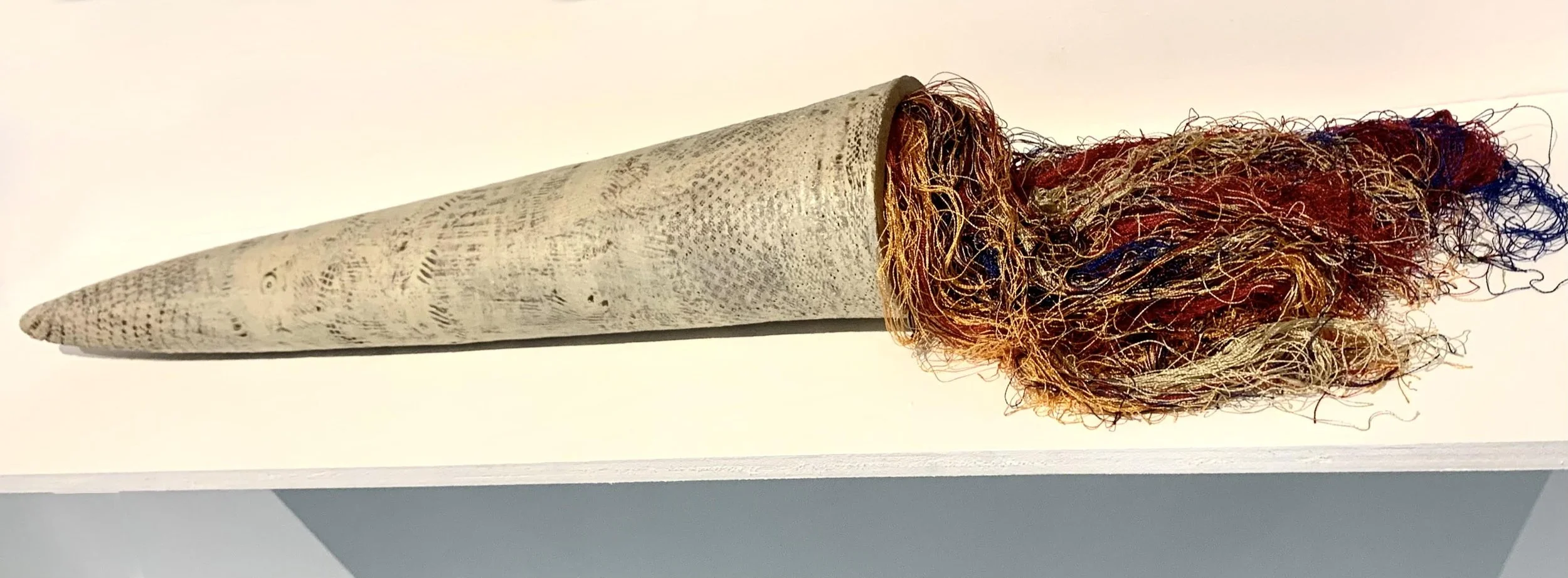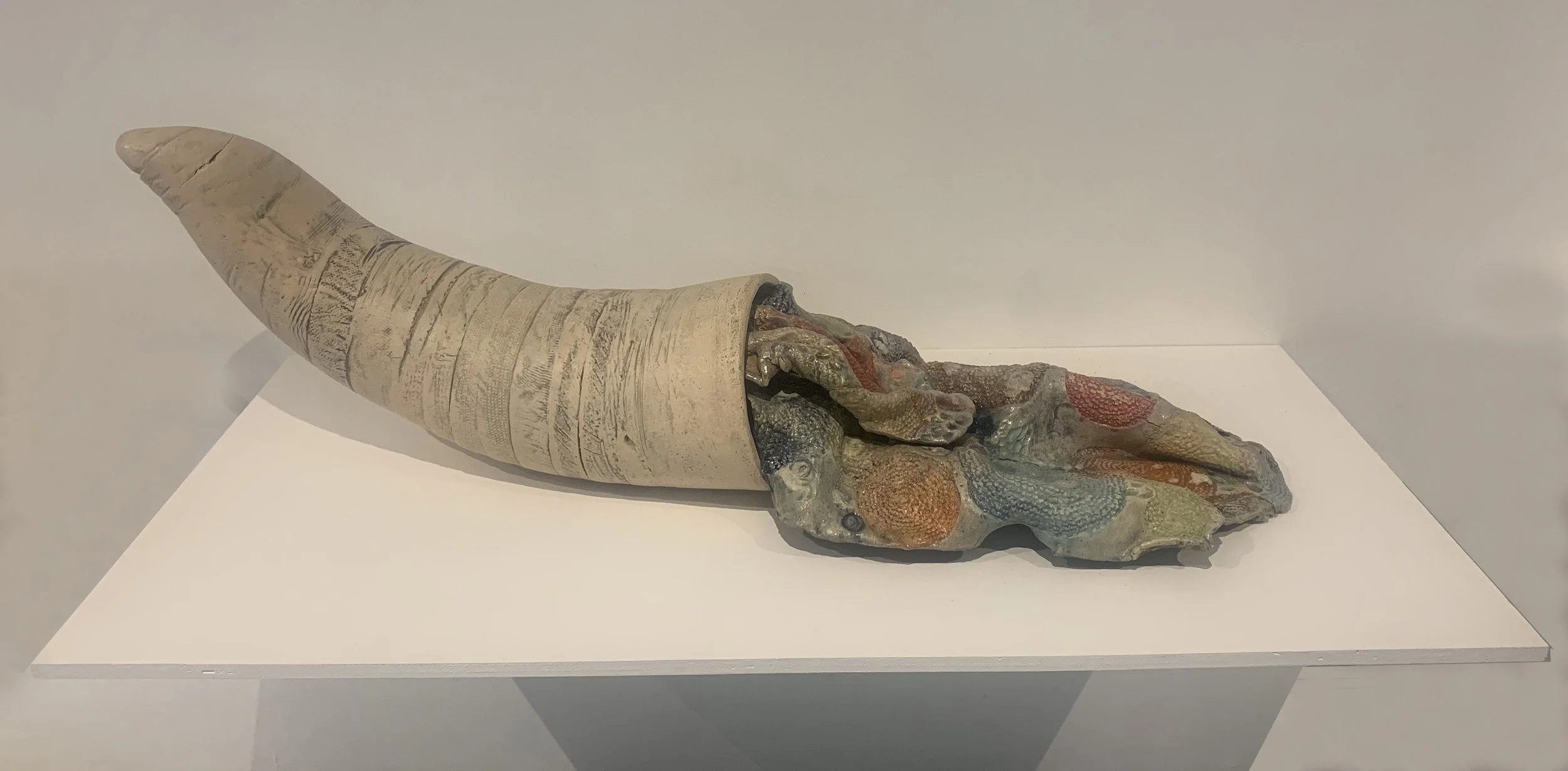Cornucopia, or the Horn of Plenty, is about continuous plenitude. One of the best-known stories about cornucopia involves the birth of the god Zeus who, as a baby, had to be hidden from his devouring father. The infant Zeus was nurtured by other divine escorts including the goat goddess Amaltheia who nursed him with her milk. One day, by accident, one of her horns broke. The sudden mishap gave rise to something transformative – the horn started to provide a continuous flow of fruits, vegetables and even milk, the supply of which was enough to provide nourishment not only to the gods’ Cretan counterparts but to the rest of the world.
Now and then, it takes a disruption, in whatever form, to prompt a change in regular systems. Delia Prvački’s work Cornucopia—of abundance and giving was set aside last year for an exhibition, against the backdrop of global unrest caused by the COVID-19 pandemic. The result of five ongoing decades of making, the work has existed in its various fragments since the 1970s. Viewed today, the work is made more poignant as a focus for viewers to steal a glimpse of hope in the perennial surplus of nature’s perpetual giving.
Expanding from a singular horn motif into manifold incarnations, it is a work that is grounded in the belief in goodness and, ultimately, possibilities. Cornucopia—of abundance and giving comprises of about 30 titled works, prompted by the horn-shaped motif, a gestural shape as if one is drawing a comma. Whether the shape would ultimately be a tool, a symbol or an intuition, it maps onto various mythologies, each of them coded and expanded with their own narratives.
Curated by Tamares Goh
Exhibited at Earl Lu Gallery, Institute of Contemporary Arts, LASALLE's McNally Campus

